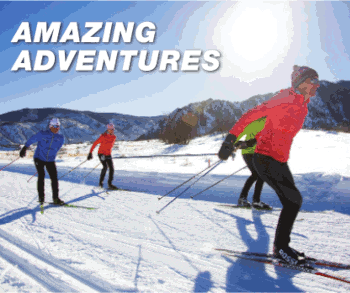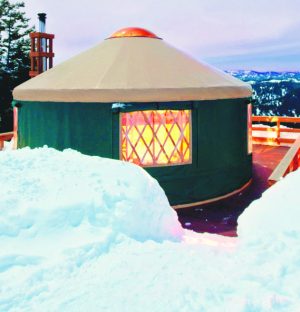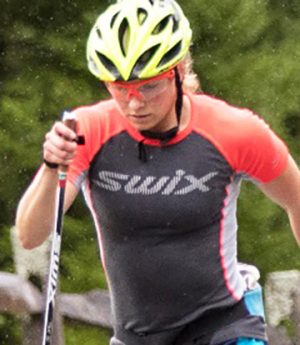October 29, 2009 (Colorado Springs, CO) – Training is evolving and the general principles of athletic performance continue to be honed. There are numerous strategies that result in positive athletic gains. It’s important that a baseline is maintained with all the new information streaming in or this information will clutter the mind and simply become “noise.”
The goal is to maintain progression and context in training. Take a step by step approach from simple to complex or easy to difficult, so POSITIVE adaptations take place. Context pieces together training sessions, so there is flow in training. Yesterday effectively leads into today and today leads into tomorrow. Everything should connect together – training, recovery, travel, meals, etc.
I try to take advantage of as many educational opportunities as possible. It is a balancing act between maintaining athlete-coach contact and advancing the knowledge base for future support. This year, I have been involved in seminars in Colorado Springs (Training Design Symposium – USOC) in March, Florida (GAIN) in June, the Twin Cities (USSA) in September, Lake Placid in early October (USOC) and most recently Colorado Springs for an Altitude Training Symposium (USOC).
My general goals at such symposiums are:
1. Listen to all the information and absorb with an open mind
2. Peel away the details and determine if there are any common themes.
3. Determine any unique situations, circumstances or concepts that seem to be outliers.
4. Determine if any of the information might fit into our training strategies to further progress specific athletes or the program as a whole.
The US Olympic Committee Altitude Training Symposium included representation from 20 sports, 18 countries and all 6 continents. The program kicked off with three brief presentations relating to continuing altitude training research. The second topic was an extensive presentation from Ellen Miller photo reenactment of summiting Mt Everest from both the north and south. Ellen’s presentation discussed the challenges faced while acclimatizing to the most extreme altitudes on the planet. This practical explanation flowed right into the research-oriented presentations from sport scientists subsequent to Ellen’s talk.
This third set of the presentations was based on altitude applications and strategies implemented all around the world.
– Altitude/ Hypoxic Training: The Canadian Model – Dr David Smith – University of Calgary
– Altitude/ Hypoxic Training: The New Zealand Model – Dr John Hellemans – New Zealand Academy of Sport
– Altitude/ Hypoxic Training: The Kenyan Distance Running Model – Dr Randy Wilber – USOC
Science will continue to seek answers about when, what, how and why, but usually coaches and scientists, alike, direct their questions and studies toward the locations and programs that seem to be leading the charge with competitive success. It is everyone’s (coaches, athletes and science) goal to learn and understand current success then apply innovation to these present principles to become a program that develops perennial success in their own right. This perpetual pursuit for improvement in directions we might not have even thought about keeps us motivated, curious and inspired to know that progress can and will result if we dig deeper or search in directions that we haven’t in the past. It’s humbling and exciting to know that there is a lot more out there that will drive sport to even higher performance levels. It’s important to keep a firm grasp on the fundamentals and then seeking out innovative details.
The concluding presentations were based on successful models used by US programs. These were led by coaches and athletes, which made them more rooted in practical application and experience. Programs are often challenged with unique circumstances that require accommodation and innovative solutions. Creating an “optimal” program generally means handling extraneous challenges with composure and creativity. For example, travel and jet lag are necessary evils. They exist and need to be addressed yet minimized. Another example might be hydration and fueling during and immediately after training and competition. Typically a little proactive planning can take care of these items, whether it’s having food and drink in the van and the coach drive along during training session or the athlete ensuring they are well fueled before the workout and pack a lunch for immediately after.
One challenge that was particularly interesting to hear about was from Coach Bowman, who coaches the likes of Michael Phelps and company. He discussed the challenge of training, dining, recovery and resting when they are training four times per day (6:30AM, 11:30AM, 3:30PM & 5:30PM) in their volume altitude camps. He stated that the athletes joking comment that the USOC facility in Colorado Springs is “jail” for their training interim.
The US program presentations were:
– High Altitude Training for Olympic Swimmers – Coach – Bob Bowman – USA Swimming – North Baltimore Aquatic Club; Baltimore, Maryland (100 meters above sea level). Discussed living and training low and then having specific training camps at high elevation.
– Altitude/ Hypoxic Training in the Preparation of Elite US Nordic Combined Skiers – Coach Dave Jarrett & 2009 World Champion Bill Demong – USST; Park City, UT (2500 meters above sea level). Discussed living and training high and then having specific camps and competitions low.
– Altitude/ Hypoxic Training in the Preparation of Elite US Distance Runners – Coach Terrance Mahon & 2004Olympic Bronze Medalist in the Marathon – Deena Kaster – Mammoth Track Club; Mammoth Lake, CA. (2440 meters above sea level) Discussed living and training high and competing low.
Every situation outlined unique assets as well as unique challenges in their respective sports, individual strengths, competitions and living environments. For example, Dave Jarrett discussed the challenges of trying to be competitive in two sports (ski jumping and cross country skiing). He discussed the limitation of training locations that include both excellent cross country skiing training as well as ski jumping. He also discussed the dynamic of ski jumping at different elevations. Different elevations require different ski jumping positions as the athletes fly through the air. Therefore sometimes the athletes need to train low for the athletes to acquire the kinestic sense of flying through “thicker” air. Training low for jumping can compromise the desire to be at altitude where snow might be more prevalent for cross country skiing.
Coach Terrance Mahon and Coach Bowman both discussed individual athlete response to altitude and how some athletes respond differently to this additional stressor. Coach Mahon stated that everyone responds to altitude, but some adapt differently than others. His thoughts were that more aerobic-based athletes respond more rapidly. Terrance Mahon stated that altitude is a stressor, much like resistance training, intensity training or running uphill. His general premise was that altitude is like any stressor. It can be implemented effectively if planned appropriately.
What intrigued me the most was the similarities discussed. The similarities of the presentations were striking and stemmed far beyond altitude training. One question was asked to every scientific presenter (Altitude Training Around the World Presenters) as well as every coach from the presenters from the US Altitude Programs.
To be continued…
Top News Stories
CXC Vertical Limit Blog – Altitude Training Symposium
by Bryan FishLeave a Reply
You must be logged in to post a comment.






![National camp action [P]...](https://skitrax.com/wp-content/uploads/2019/08/Duluth-4-2019-08-08-at-10.46.51-AM-300x246.png)
![Matt Liebsch on the CXC Elite Team [P] CXC...](https://skitrax.com/wp-content/uploads/2019/08/Matt-Liebsch-CXC.2-525x700.4-300x267.jpg)
![Dan LaBlanc [P]...](https://skitrax.com/wp-content/uploads/2019/08/Dan-LaBlanc-img_1855.3.jpg)

![Olympic Training Center, Colorado Springs, CO[P]courtesy of CXC Vertical Limit](http://skitrax.com/skitrax22/images/skitrax/4ae9b3b433472picture-272.jpg)